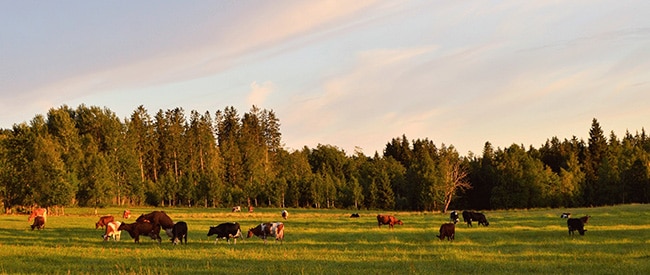On the Farm: COVID-19 Risk Management Best Practices

Protecting yourself, family, and communities by creating a COVID-19 farm risk management plan should be a top priority. Listed below are some best practices specifically for farmers to consider.
In addition, remember to always follow the guidelines from your municipality and province before changing your processes or opening your business.
Farm Hands and Workers
Making sure all the jobs are completed on the farm is necessary to ensure a good harvest. Even harvesting can’t be completed without people to help. Consider the following guidelines to protect workers on the farm and help prevent the spread of COVID-19.
- Create clear workplace policies on the farm to ensure people with cold or flu symptoms do not come to work
- Allow for sick day policies so workers can be off when they are ill or have symptoms of a cold or flu
- Focus on higher-risk employees including those over the age of 60 and those with underlying medical conditions
- Consider flexible hours or multiple shifts to ensure staff can socially distance and still get work done
- Provide full personal protective equipment for workers who must be closer than the two meters
- Educate farm workers on health and safety measures to prevent transmission of infectious disease
- Clean high-touch areas on the farm frequently and provide hand sanitizer at key locations in farm buildings and locations e.g., barn entrance, storage entrance, farm stand
- Increase workplace cleaning in general by providing the necessary supplies and reinforcing personal hygiene messages to workers
- If possible, reconfigure the work environment to maintain appropriate distance between workers e.g., instead of standing side-by-side to organize and wash produce, separate workers by moving equipment or changing location
Selling to the Public
Farmers Markets
Connect with the management of your local farmers market to understand their guidelines.
- Consider fencing and distancing practices to direct the flow of people
- Consider handling and packing all products for customers rather than allowing customers to handle
- Instead of cash, offer tap payment options for credit and debit
Roadside Sales
For roadside stands, different measures may need to be taken depending on if you operate an honour system farm stand or a managed farm stand.
- Ensure your local government is allowing roadside stands to be open and follow any new protocols and permit requirements
- Honour System
- Clean surfaces regularly
- Create signage with clear instructions
- Minimize touch points for customers to access your product e.g., if selling flowers, ensure each bundle is in a separate bucket so customers only touch one bundle
- Consider disinfecting cash from the locked cash box before handling
- Managed Stand
- Clean surfaces regularly
- Consider fencing and distancing practices to direct the flow of people
- Consider handling and packing all products for customers rather than allowing them to handle
- Instead of cash, offer tap payment options for credit and debit
Horse Boarding
Farms offering horse boarding can consider many options to help protect the people coming and going from the barns to take care of their horses.
- Consider adding more hand wash stations
- Create clear policies to ensure people with cold or flu symptoms do not come to the barn
- Educate horse owners on health and safety measures to prevent transmission of infectious disease
- Clean high-touch areas on the farm frequently and provide hand sanitizer at key locations
- Consider a temporary limit on guests to the barn e.g., only horse owners and their immediate family members
- Consider a check in and check out procedure for the premises
- Ensure no equipment is being used between individuals without cleaning first
- Minimize shared spaces
- Temporarily cancel farm tours
Check out these websites for more information on COVID-19 farm risk management practices.
Canadian Federation of Agriculture

